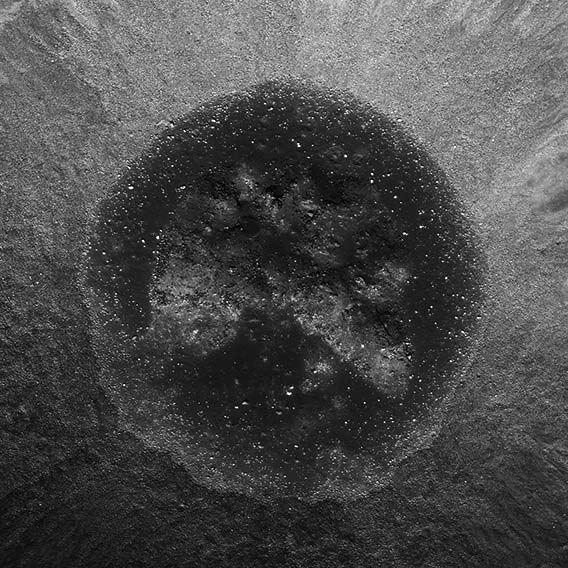Create a free profile to get unlimited access to exclusive videos, sweepstakes, and more!
An Impact Melt Crater You'll Flip For

I love illusions, and one of my favorites is the âdome/craterâ illusion. Itâs pretty simple, actually: a depression in the ground, like a crater, looks like a dome when you flip it. Our brains like to interpret lighting as coming from the top of a picture (we evolved to see our landscape lit from above from the Sun), so when a crater is actually lit from below, it looks like a dome.
I run across this illusion so much when I look at pictures of the lunar landscape I donât even hesitate to flip the image over when I sense somethingâs amiss. Like this one:
This is a shot of the crater Schiaparelli-E taken by the Lunar Reconnaissance Orbiter. It shows the central floor of the crater, surrounded by the rim (which is not completely framed; you can see the edge of the rim to the upper left).
The weirdly-shaped stuff in the middle looks like a series of pits to my eye, and I knew that couldnât be right. Craters usually have raised features in the floor! So I flipped it over, and voilà :
Ah, thatâs better! Now you can see those features really are raised lumpy hills.
So whatâs going on here? The crater still looks weird.
This is an example of whatâs called âimpact meltâ, when an asteroid or comet slams into the surface with so much energy it melts the material around it. That happens every time with a big impact, but in this case the molten material pooled around the bottom of the crater floor, filling it partway. Hills or mountains are common in bigger impacts, as the rock pushed out from the impact flows back in, a bit like the way a drop of milk splashed into a glass causes a rebound drop to shoot back up.
So after the hills formed, more molten material filled the crater, giving it a smooth, flat floor that is higher than it would have been without the melting. The hills poke out of it, giving it that weird look. Later, rocks and boulders rolled down the inside rim wall, many stopping at the floor boundary while some managed to make their way further in. You can easily see hundred of such boulders in this wonderful high-resolution image.
It's funny. The original Moon Illusionâthe Moon looking huge on the horizon but smaller when overheadâis due to your brain misinterpreting the shape of the sky and the apparent size of the Moon, and supposedly can be overcome by standing on your head. The same is true for this other Moon illusion, too!
Pictures donât generally lie, but our brains do, all the time. Which is why we skeptics have a pair of sayings: Seeing isn't always be believing, and what you see is not always what you get.


























